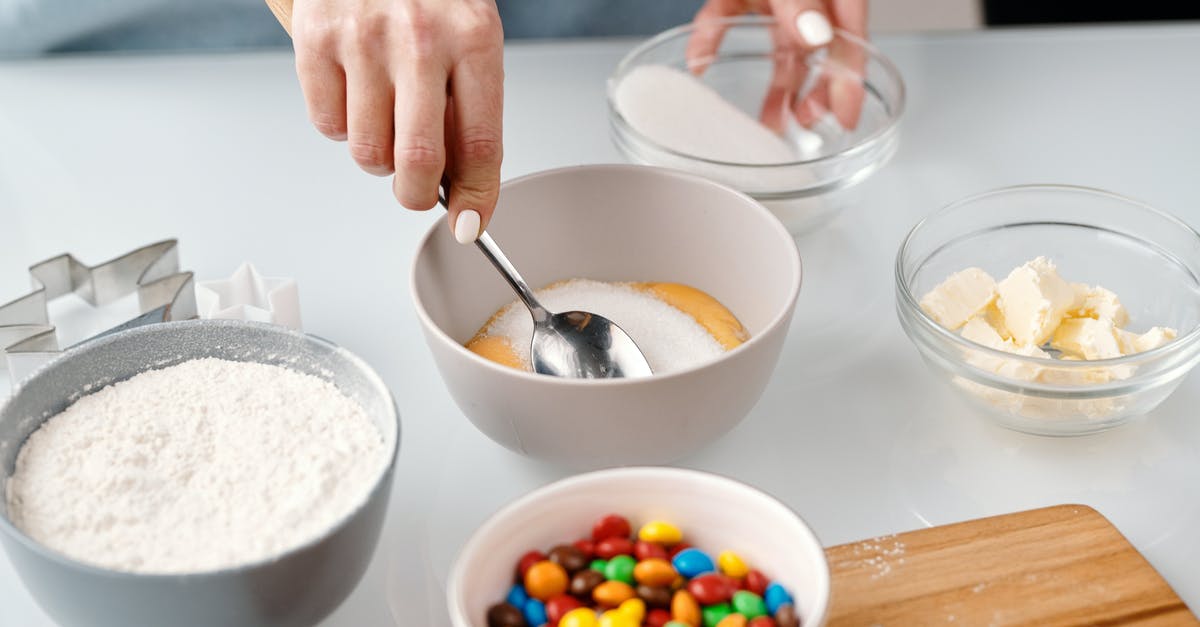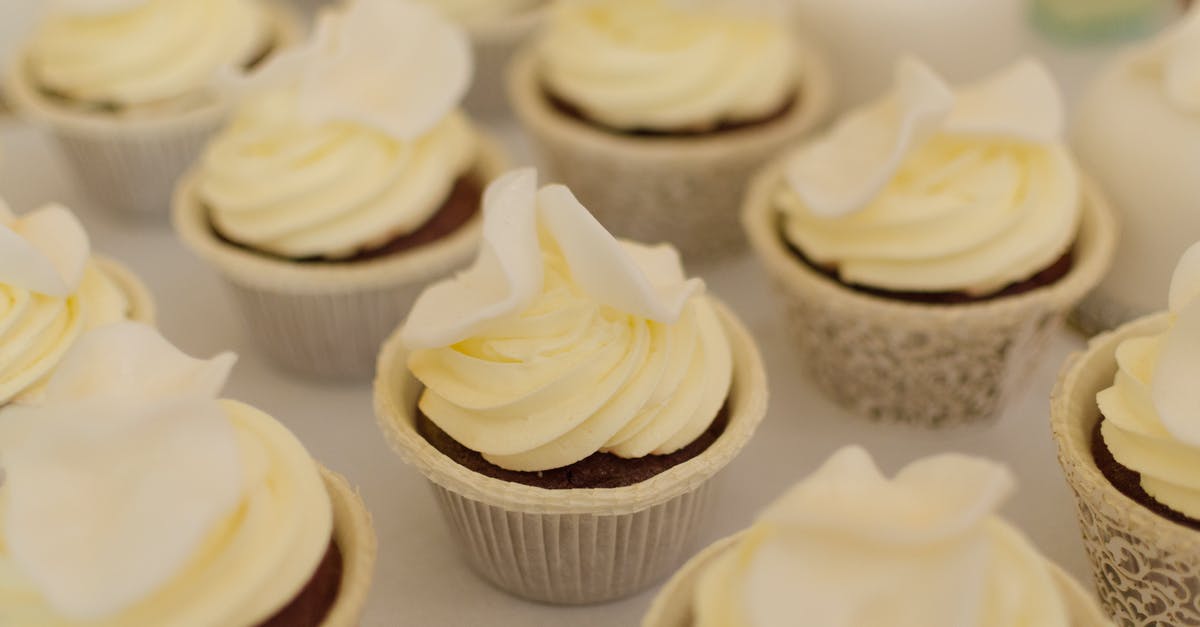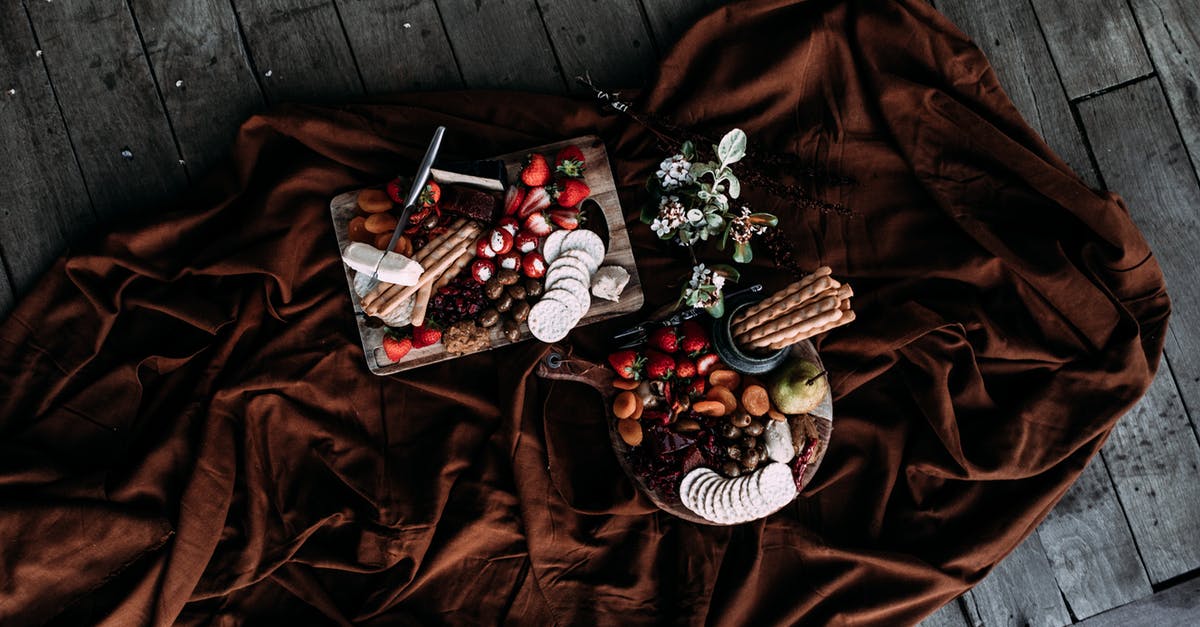Solutions for when heating chocolate and butter doesn't mix well

Yesterday I tried to make brownies that started out with me having to melt unsweetened chocolate with butter in a frying pan on the stove. This did not work well. The chocolate kindof mixed with the melted butter, but parts of it remained solid. I then had to let it cool before adding the rest of the ingredients; the butter and chocolate separated, and the chocolate formed small to medium solid globs in the butter.
What did I do wrong? If this were to happen again how would I go about fixing it? Should I add something to counteract this and if so what and how much?
NOTE:
- I didn't have unsweetened chocolate so I used Hershey's pure chocolate chipits.
- I also used margarine instead of butter but have never had a problem with this substitution before.
Best Answer
I am sorry, but the accepted answer is incorrect in many details.
When chocolate seizes, it is due to a small amount of moisture. Imagine a cup of sugar. It will pour freely. If you add a small amount of water, clumps of the sugar will stick together and stop flowing. Add enough water, and the combination of sugar and water dissolve together, and flow freely again.
With chocolate, it is the solid particles embedded in the fat phase that interact with water to seize. Adding enough water (about 20% by weight) will un-seize the mixture although it will of course contain much more water.
Similarly, seized chocolate can be recovered for some purposes simply by adding additional water.
This is in contrast to scorching where the chocolate and its components essentially burn, at least locally. This creates a similar texture to seized chocolate, and a terrible flavor. There is no way to recover scorched chocolate.
Of the three reasons enumerated in the original accepted answer, only one is a true cause of seizing:
Using too high a heat. The danger here is scorching the chocolate, not seizing it. You do want to use low and gentle heat, as from a bain marie, double boiler, or simply in the microwave at low power, but this has nothing to do with seizing.
Sugar bloom and other impurities. Neither sugar bloom nor fat bloom cause seizing in any way. In fact, bloomed chocolate can be melted down and then re-tempered, and assuming it has not gone rancid or spoiled, it will be as good as a fresh bar.
Impurities on the other hand, well, it would depend on what they are. Chocolate chips, especially from supermarket brands, often have some of the cocoa butter of true genuine chocolate removed and substituted with cheaper lipids like hydrogenated vegetable oil. These fats do not have the same mouth feel and melting characteristics, but again, are unlikely to change seizing behavior.
Contact with moisture. A small amount will cause seizing. However, it is trivial to recover--add more liquid until the mixture smooths out again. Note that this is again in contrast to scorching, which is not fixable.
So of the first three gotchas, really only the third could cause seizing.
So the most likely culprit for the original poster is low quality chocolate chips, or too high a heat leading to scorching. It is also possible but unlikely that the heat was too high, so that some of the the water boiled out of the butter, leading to seizing—but if that were true, you almost certainly would have scorched the chocolate as well.
Most recipes which direct the cook to melt chocolate and butter together actually have more butter than chocolate, and butter is about 20% water. This is enough that the fully melted mixture should be passed the seizing point.
Using margarine is also perfectly acceptable in terms of seizing. It, like butter, is about 20% water, and so performs similarly. However, if there were some margerine-like product which has a much lower but non-zero water percentage, there might be some danger of seizing.
Furthermore, when melting butter and chocolate together, it is not necessary to pre-melt the butter for two main reasons (I have done this enumerable times, both stove top and in a microwave):
- Butter melts at a lower temperature than chocolate, and so will tend to melt first anyway
- Assuming the heat level is low, and you stir occasionally, the mixture will not scorch, and so will un-seize when everything is fully melted and stirred together.
Of the advise listed in the original, I would clarify:
Using is margarine is fine, but don't use a product that doesn't contain 20% water, equivalent to butter (or one that contains more water).
There is no need to melt the chocolate and butter separately. Clarifying the butter first is actually counter-productive, as it will reduce the water percentage, but probably not down to zero. This may leave enough water to seize, but not to move past the seizing.
Use the best quality chocolate you can find. This is true, but mostly for reasons of taste, in my opinion.
Melt in a double-boiler or on very low heat. A microwave on low power, with occasional stirring, can also be very effective.
I would add that any recipe where butter and chocolate are melted together should have more butter than chocolate, in general, because of the seizing problem. Given that the total water needs to be at least 20% of the chocolate weight, you would need at least equal amounts of butter and chocolate, and preferably double the butter to chocolate (by weight).
A typical brownie recipe that I have made many times, for example, melts two sticks of butter (8 ounces) with 4 ounces of chocolate. That is 3.2 tablespoons of water from the butter, which is enough top prevent seizing.
One final note: melting chocolate together with a pure fat (such as pure hydrogenated vegetable oil) that has no water content is fine at any ratio.
Coda on the science:
Chocolate is normally a solid suspension of solid particles in a fat phase, with only a minuscule percentage of water. So it is water in fat emulsion. Add enough water—about 20% by weight—and the emulsion will switch to being a fat in water (or sugar syrup, as the sugar in the chocolate will tend to dissolve) emulsion, with suspended solid particles, again flowing freely. See Food Education's chocolate article for more details on the science.
Pictures about "Solutions for when heating chocolate and butter doesn't mix well"



Why is my butter and chocolate not mixing?
Fixing Seized ChocolateAdding the right amount of water (or other liquid) will dissolve the sugar and cocoa in the clumps and make it a fluid consistency again. Using 1 teaspoon of boiling water at a time, add to the seized chocolate and stir vigorously until the mixture is smooth.How do you fix separated butter and chocolate?
Melt the chocolate and butter together over a very low heat, stirring regularly. It also helps to chop the chocolate finely so that it melts evenly and to remove the pan from the heat before all of the chocolate has melted.How do you melt chocolate and butter together?
When melting chocolate and butter, you want to start by melting the chocolate first and then add the butter to finish mixing. It reduces the chance of scorching or burning. Add the butter when the chocolate begins to melt, and stir to fully melt the mixture.More answers regarding solutions for when heating chocolate and butter doesn't mix well
Answer 2
I can think of at least three things that will cause chocolate to seize - which refers to when melted or melting chocolate suddenly becomes hard again:
Using too high a heat. Double-boiler is the safest, but you can use a saucepan on very low heat.
Sugar bloom and other impurities. You shouldn't get this with baker's chocolate, but if you use any lower-quality chocolate, this can seep into the melting chocolate and cause it to seize.
Contact with moisture! Even a tiny amount will cause it to immediately seize, and it's difficult to recover at that point.
Sounds like you fell into traps #2 and #3 and possibly #1. I would not melt chocolate in margarine; I'd even be wary of melting it in butter, and find it strange that a recipe would call for that, because both butter and margarine contain water!
Melting chocolate in a liquid can actually help prevent seizing, but you have to use a lot of liquid and the liquid has to be completely melted before you start trying to melt the chocolate. It's better to use something like a vegetable oil which has no water content if this is what you're trying to do.
So, in summary:
Definitely stay away from the margarine. Even if you need to use butter, make sure it's completely melted first and try to use only the fat (clarify it).
If you can, melt the chocolate and clarify the butter separately and then whisk them together gradually afterward; not only will this help to prevent seizing, but if commenter @roux is correct and the problem isn't one of seizing, this will still help to guarantee that the chocolate melts evenly.
Use the best quality chocolate you can find. Chipits are generally OK to melt on their own, but if they've been sweetened then this may contribute to seizing if other factors are present.
Melt in a double-boiler or on very low heat.
Answer 3
To save separated chocolate, immediately put in freezer, let it remain for 5 min. Take out and put on double boiler. Heat slowly (low to start and then to low-med heat) while adding about 1/3 cup of heavy cream. When it glistens - take off and pour ganache immediately
Answer 4
I think you may be heating it too quickly. Try gently simmering some water and putting the butter/chocolate mix in a bowl on top of that.
Answer 5
I'm in culinary school and when we make mousse, we melt the chocolate and butter together in a metal bowl over a pot of water. I learned the hard way when they say double boiler is misleading. Your bowl should be cool enough to grab with a bare hand or else your water is too hot. It only needs to be at a light simmer and put the butter in the bowl first and the chocolate on top and then walk away. Don't touch it, give a turn after a few minutes. Do that maybe twice, but don't stir it.
Answer 6
I was making fudge today, and had my BAKERS chocolate and butter seize up and turn all grainy. Instead of throwing out this expensive mistake I decided to try something to fix it. Over very low heat, in a pot, I remelted the mixture, and than added about 1/4 cup of vanilla liquid creamer. I couldn't believe how quickly it smoothed out and the creamer added a better flavor and creaminess to my fudge! Hope this helps. - Lis
Answer 7
When melting butter and chocolate together in microwave, I have found that starting with FROZEN butter does not work well. (I guess that is because the butter needs to melt before the chocolate.)
Using frozen butter results in separation of butter and chocolate, separation of the batter, and even separation of the final baked product (creating an oily feel). Still edible though. (-:
Sources: Stack Exchange - This article follows the attribution requirements of Stack Exchange and is licensed under CC BY-SA 3.0.
Images: Nicole Michalou, Lukas, Rachel Claire, Nicole Michalou
